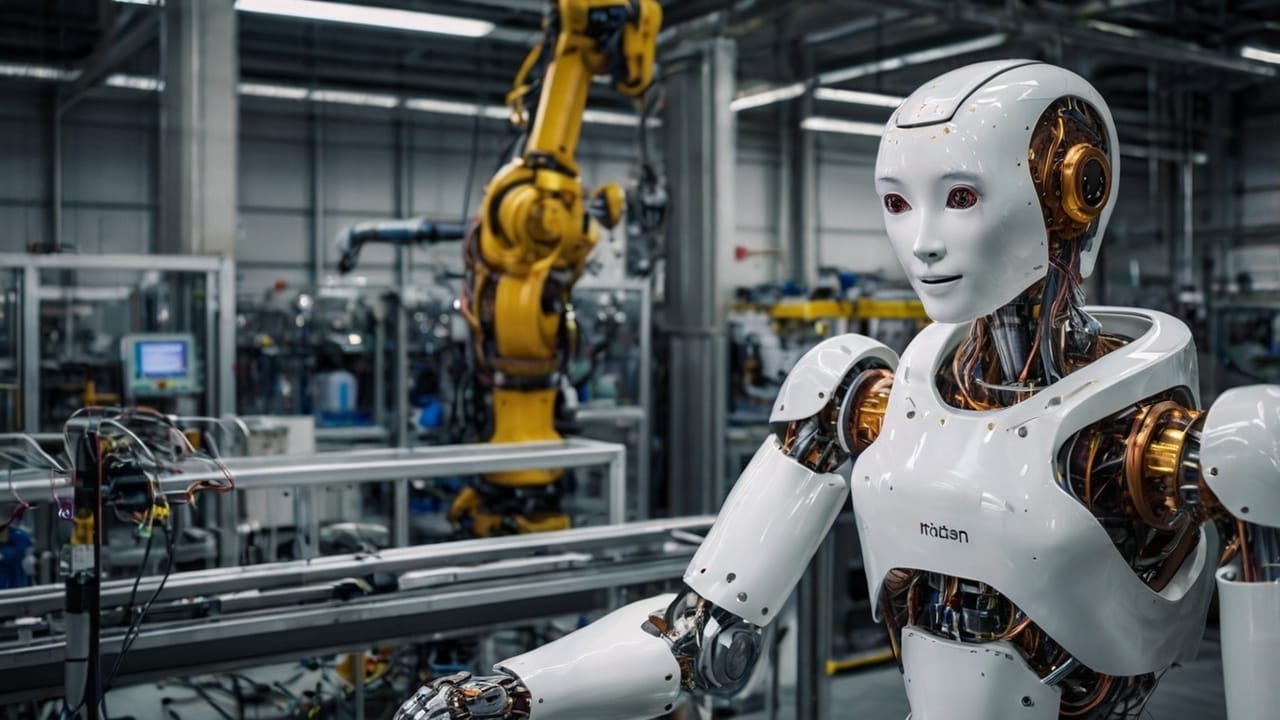As industrial automation accelerates worldwide, the role of industrial robots and artificial intelligence (AI) in manufacturing has become indispensable. Recent data from the International Federation of Robotics (IFR) reveals a new milestone: the number of industrial robots globally has now surpassed 4 million, indicating a significant leap in robotics adoption across various industries. This surge is driven by growing demands for precision, efficiency, and technological advancements in robotics and AI capabilities.
The Rise in Global Industrial Robot Adoption
The integration of industrial robots in manufacturing is rapidly expanding. Manufacturing giants, particularly in automotive, electronics, and logistics, are leading the charge in robot adoption, accounting for over half of all robots deployed worldwide. Asia remains the largest market, with countries like China, Japan, and South Korea consistently ranking as top adopters of robotics. Europe and North America follow closely, investing heavily in robot-driven automation as a response to labor shortages, rising operational costs, and increasing demand for high-quality production standards.
The significant increase in industrial robots aligns with a global shift toward smart manufacturing. These robots perform highly specialized tasks, including welding, painting, assembly, and packaging, with increasing speed and accuracy. With over 4 million robots now operational, the manufacturing landscape is transforming to a more automated, efficient environment.
Role of Artificial Intelligence in Enhancing Robotic Capabilities
Artificial intelligence has become a critical component in robotics, pushing the boundaries of what industrial robots can achieve. AI enables robots to learn, adapt, and optimize their tasks through machine learning algorithms and real-time data analysis. This has opened doors for collaborative robots or “cobots,” designed to work alongside human operators, enhancing safety and efficiency in shared workspaces.
AI also powers predictive maintenance systems, allowing robots to anticipate mechanical failures before they occur, thereby minimizing downtime and improving productivity. Vision systems, powered by AI, enable robots to “see” and make adjustments during operations, creating a significant advantage in fields where accuracy and adaptability are crucial, such as electronics manufacturing and food production.
Benefits of Industrial Robots in Modern Manufacturing
Industrial robots bring numerous advantages to the table:
- Increased Efficiency: Robots can operate 24/7 with minimal supervision, significantly boosting production rates.
- Enhanced Precision: High-precision tasks are performed with minimal error rates, essential in fields like electronics, where accuracy is paramount.
- Cost-Effectiveness: Despite high upfront costs, robots can reduce long-term labor and operational expenses, often resulting in cost savings within a few years of deployment.
- Safety: Robots handle dangerous and repetitive tasks, reducing workplace injuries and improving overall safety standards.
Industries worldwide are reporting higher yields and faster turnaround times due to these efficiencies, providing them a competitive edge in a demanding global market.
Challenges and Future Directions
While industrial robots and AI technologies offer substantial benefits, they also present challenges. High installation costs can be prohibitive for smaller businesses, and integrating robots into existing systems often requires specialized technical expertise. Additionally, as robots assume roles traditionally held by humans, concerns regarding job displacement continue to grow, emphasizing the need for workforce retraining and upskilling.
The future of industrial robotics lies in advancing machine learning, computer vision, and sensor technology. This will enable robots to perform even more complex tasks, such as delicate assembly and quality control, with minimal human intervention. As AI capabilities grow, robots are expected to become increasingly autonomous, opening new possibilities in smart manufacturing and beyond.
Finally, Industrial Robots
The unprecedented growth in industrial robots and AI integration highlights a transformative shift toward a more automated industrial landscape. With over 4 million robots now at work worldwide, manufacturers are embracing this technology to meet the demands of modern production. Although challenges persist, continued innovation in AI and robotics promises an exciting future, where smart factories are the norm and efficiency reaches new heights across industries.
This expansion underscores a pivotal moment for industries worldwide, pushing both large and small companies to consider how automation can enhance their operations and set them apart in a highly competitive market.











the article looks ai-generated
First of all, thank you very much for your comment. Yes, due to our intensive work, we prepare some of our related content with artificial intelligence. Unfortunately, we need artificial intelligence to keep up with other websites.
this is good
First of all, thank you very much for your comment.